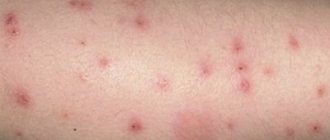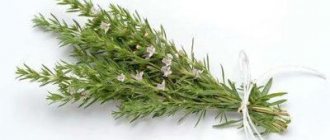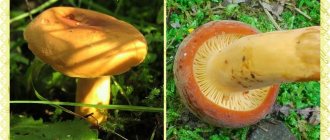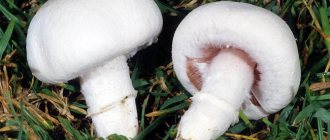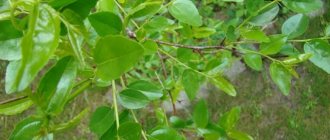The common ground beetle is a family of beetles, which includes over 25 thousand species in the world and more than 3 thousand species in Russia. The insect belongs to the order Coleoptera, up to 60 mm long, and has different color options from dark to metallic tint. Many representatives of this species practically do not fly, but they run extremely fast, improving this ability from generation to generation.
What do beetles eat, what do representatives of different species look like, are they beneficial or harmful? More on this below.
Where does the ground beetle live?
The insect's habitat is vast - from tropical islands to deep mountain caves. Thanks to the huge number of subspecies, bugs are distributed almost throughout the globe. Some species are able to survive in long-term absence of water or in sub-zero temperatures.
In Russia, beetles live throughout the country. They prefer the top layers of soil, mainly in gardens and fields. There are species living in trees. In mountainous areas, insects prefer caves and cracks.
Lifestyle and habitat
All types of ground beetles are considered terrestrial insects. Most often, they make their home under stones, between tree roots, among foliage and in thickets of grass. Only a few species of insects are able to build their homes in trees, and then only low, at a height of up to two meters.
Despite the fact that beetles are predators, they themselves can easily become prey for birds, so they make their shelters in crevices of the bark or between branches. The main living conditions are high humidity, stable temperature conditions and dense shade.
Recent observations of these beetles have finally convinced scientists that ground beetles live in several families. Small groups of insects allow them to successfully hunt larger prey, such as small lizards.
Types of ground beetles
There are a great many descriptions of their types. Entomologists regularly find and study new species of insects.
The largest species living in Russia is the Caucasian ground beetle, which lives in the mountains of the North Caucasus. It is listed in the Red Book. Body size – up to 5.5 cm. The insect is active mainly after sunset. Representatives of the Karabus family are the most common in Russia.
On the territory of our country, beetles of the dull beetle, grain beetle, garden beetle, runner and bread beetle are often found. In the southern regions, the fragrant beetle is found - a medium-sized beetle with a yellowish-green metallic color.
Insects named after entomologists (Yankovsky, Lopatin) are listed in the Red Book of Russia. These beetles are beautiful in color, but they are facing extinction. It was because of the unusual color schemes that entomologists hunted them in order to get a beautiful beetle for their collection.
Origin of the species and description
Photo: Ground beetle
Ground beetles (Carabidae) are a family of beetles, class insects, phylum arthropods, order Coleoptera. The name of the beetles comes from the word “buzz.” Entomologists know about 40 thousand species of ground beetles, and at least 3 thousand species can be observed in Russia alone. They all belong to the same genus, but at the same time they have some differences among themselves: in size, color and even in appearance.
Video: Ground beetle
Ground beetles are typically dark in color, sometimes with bright steely greens, blues and golds. Occasionally you can find red and red shades. If you look closely at the metallic sheen, you can see many very thin stripes. The body length of different types of ground beetles varies from 1 to 10 cm.
The most interesting types of ground beetles:
- Caucasian ground beetle. It lives mainly in the north of the Caucasus, but is often found in the Krasnodar Territory. The Caucasian ground beetle has a bright bluish, sometimes purple or greenish color. The number of the species is rapidly declining, which is why it is listed in the Red Book of Russia;
- Crimean ground beetle. The species is found only on the territory of the Crimean Peninsula and is active mainly at night. This beetle is quite large - its body length often reaches 6 cm.
Interesting fact: In the back of the body, the Crimean ground beetle has glands with a caustic, but not poisonous liquid, with the help of which it “shoots” at its enemies at a distance of up to 2 meters.
Characteristics and body structure
The sizes of ground beetles range from 3 to 60 mm. Unlike other beetles, these ones fly poorly, but run fast. Some species do not fly at all. Ground beetles are long-lived; under favorable conditions they live 5 years, the average life expectancy is 3 years. It has many features in its body structure.
Head
The head is extended forward. Beetles have powerful and sharp jaws. Their shape is different, depending on what is included in the insect’s diet. Predatory species have a long, sickle-shaped upper jaw that helps them hold onto prey tightly. And insects that feed on plants have large and blunt jaws.
In some species the temples are clearly defined and the head is narrowed. The forehead is slightly compressed in front. If the compressed part is short and wide, it is called a fossa in the forehead; if it is long, it is called a groove. In front, the grooves fall on the clypeus, and in the back - on the temples.
The eyes of beetles have different sizes:
- large (active during the daytime and twilight);
- medium (nocturnal);
- small or absent (live in caves and inside the soil).
What does this beetle eat?
Most beetles of this genus are predators. Some species of ground beetles are capable of mixed feeding (the maxophagus, for example, is primarily a predator, but sometimes also eats vegetation). Among the predators there are scavengers.
Conventionally, all ground beetles are divided into two categories: herbivores (phytophages) and predators (entomophages). Carnivorous species are larger and have pointed jaws, which are convenient for grasping prey. The jaws of predatory beetles are called mandibles. Carnivorous ground beetles are a kind of wolf in the world of entomology.
Insects that feed on plant foods have massive and blunt jaws. Predators are similar in build to ants: long developed legs, a pronounced head, a convex or flat-elongated body. Phytophages have shortened legs, compared to predators, and a rounded body shape.
The entomophagous group includes the following species:
Nutrition
The ground beetle lives in forests, parks, gardens and personal plots, where there is a large accumulation of all kinds of food. The favorite “dishes” of beetles were and remain:
- caterpillars;
- larvae;
- aphid;
- slugs;
- snails
The principle of hunting and capturing prey is extremely simple. When a beetle discovers its “dinner,” a special fluid is activated in the glands hidden in its powerful jaws. The beetle sprays its victim with this composition, waits a few minutes and then begins to eat.
The injected composition immobilizes the insect and softens it into a kind of pulp, which the beetle easily absorbs. After a hearty lunch, the ground beetle can return to its shelter and not come out for several days in a row to digest the food. After complete digestion, after two or three days, the beetle goes hunting again.
How does it reproduce?
The lifespan of a beetle is on average 3 – 5 years. There are species that live more than 10 years. A long lifespan is rare for insects of the ground beetle species.
The mating period for beetles occurs in the middle or end of spring. Around April, females lay eggs.
The life of the brilliant ground beetle begins in an egg, which the female lays in the upper layers of the soil, preferring small holes. There are 60 - 90 eggs at the laying site. After two weeks, large larvae appear - up to 2 cm in length.
After hatching from the egg, the larvae have a white color that disappears within 10 hours. By this time it becomes dark, invisible on the ground. The next two days after changing camouflage are required to strengthen the jaws. After 36–40 hours, the larva begins to hunt on its own. She clamps the victim in her jaws and drags her into soft ground to calmly feed herself. They move with the help of six legs, short and voluminous.
The larva spends its time in this way until the end of summer, after which it enters the pupation stage. The pupa resembles the body of an adult beetle: oval in shape, dark in color with a metallic tint, and the presence of characteristic bristles.
The cocoon is located in a kind of cradle of leaves or earth. This stage of development lasts two to three weeks. In the fall, the young insect comes out into the light to develop and feed before the onset of summer diapause (hibernation).
This rhythm is inherent in most types. There are known species that are not active in the fall, but hatch from cocoons in the spring. There are ground beetles that reproduce in the summer before going into hibernation. Their larvae overwinter, develop into pupae, and in the spring new adults emerge from them - adults.
In a year, one generation manages to appear. In rare cases, two litters are formed. This phenomenon is associated with the lifestyle of beetles and their long duration of existence.
General Features
About 3,000 species of Carabinae beetles live in Russia, differing in size, appearance and even developmental features. Read below about what a ground beetle looks like.
Appearance
The ground beetle is a rather long insect, the body size of which can reach up to 8 cm, there are also crumbs up to 4 mm, medium-sized individuals grow up to 3 cm. Most often, beetles are dark in color with a shiny metallic tint created by the smallest transverse lines. There are also individuals of red, red and green tones.
The segmented body shape is the main feature of all ground beetles. Sometimes this rule is broken:
- Homophrons - are the owners of very wide bodies, characterized by convexity;
- individuals from the genus Demetrius, Drypta or Odacantha have an elongated stem-like body;
- horses are distinguished by long and thin legs;
- Scarites - burrowing individuals have a constriction that separates the front and back parts of the body.
Most species of this family fly very poorly, using this method of movement only for the purpose of settlement. In such individuals, dense elytra almost completely cover the abdominal region. For some species, the sensation of floating in the air is completely unknown. Their elytra are either absent or underdeveloped, as a result of which they grow together. Due to the loss of flight or its weakening, beetles have well-developed limbs adapted for walking and running.
Interesting!
Females differ from males in having narrowed segments. They are thicker in burrowing representatives. There is even a notch on the front tibia that serves as an organ for cleaning the whiskers. Thanks to the claw segment, the beetle is able to attach to the substrate or grasp the plant.
Lifestyle
Some types of ground beetles are located in the ground, there are also those that can live on trees or shrubs.
Most representatives of this family are nocturnal, going in search of food.
On a note!
The presence of powerful and strong limbs allows them to overcome significant distances, which is why beetles are called runners or walkers.
Nutrition
The family Carabinae includes insects with different feeding methods. What do ground beetles eat:
- phytophages - beetles that feed on plants;
- entomophages - predators whose food is slugs, snails, earthworms, caterpillars, beetles and their larvae;
- mixophages are a mixed type of ground beetles that feed on both plant and animal foods.
Reproduction
Reproduction and development of the beetle Ground
beetles live for a relatively long time by insect standards - at least three years. To become an adult, the future individual undergoes several stages: egg, larva, pupa and adult.
One clutch contains more than fifty eggs, which the female lays in fertile soil. After two weeks, larvae appear with 6 claw-shaped legs. After 10 hours, their white surface becomes purple-black. After two days, the larvae turn into small predators, becoming the owners of relatively powerful jaws. By the end of summer they pupate and after three weeks they form into young ground beetles.
Reproduction and lifespan
It is generally accepted that insects live for one season. Many - yes, but not the ground beetle. Among insects, this is a long-lived beetle. Its average lifespan is about three years. Under good living conditions, beetles can live for four to five years. Before becoming an adult, the beetle goes through four stages:
- egg;
- larva;
- chrysalis;
- bug.
The mating season for ground beetles occurs at the end of April - beginning of May. One clutch of a female contains about 70-80 eggs. There are special requirements for the masonry site. It should be very humid, warm and dark. The land must be fertile, as people say – “fat”. The female lays eggs in the ground to a depth of about three centimeters.
It takes approximately two weeks for the eggs to develop into larvae. The ground beetle larva reaches quite large sizes, about 2 centimeters. In the first hours the larvae are white, then within 24 hours each becomes black.
In its larval form, the ground beetle lives until the end of summer according to the same laws as adult beetles. The larva already has powerful jaws with which it grabs the victim, sprays it with a specific liquid and eats it.
After consuming food, the larva can also go into the ground for several days until it is completely digested. At the end of summer, the larva in its shelter becomes covered with a cocoon and falls asleep. The appearance of a full-fledged beetle occurs only in the spring.
Character and lifestyle
Beetles are inclined to a terrestrial lifestyle. They live in small groups consisting of different species of the family. The dwelling is located in small layers of soil, under stones, at the base of bushes and grasses. Only a few small species prefer to settle on bushes and trees.
The daily activity of beetles divides them into 3 types:
- daytime;
- night;
- daily allowance.
Insects are generally nocturnal, during which they hunt for food. Thanks to their powerful and strong limbs, they quickly move over fairly long distances, which is why they got the names “walkers” and “runners”.
The daytime period is spent entirely in their shelter. For the winter, towards the end of the autumn cold, they burrow into the ground until spring. With the onset of warmth, they rise to the surface and continue their life activities.
The Crimean ground beetle received its nickname bombardier thanks to the protective fluid found in the anal gland. Throws it at the enemy, sensing danger and persecution.
The foul-smelling poisonous mixture reaches a hot temperature upon release and explodes with a loud click, instantly evaporating in the form of a cloud. The frightened predator with noticeable burns takes off running. The supply of reagents is enough for 15-35 salvos.
Harm of ground beetles to plants and humans
Common carnivorous species do not harm crops or humans. On the contrary, they help destroy pests that cause significant damage to the farm. Some species feed not only on insects, but also on mollusks (snails), worms, and caterpillars. You can often find empty grape snail shells in gardens. This is exactly what a ground beetle’s job of getting food looks like – the snail itself disappears in the digestive system of the predator, and its shell remains empty.
If entomophages do not pose a threat to plants and crops, then phytophages are a different matter. They are capable of destroying a huge number of cereal crops per season. Adult individuals undermine the stems of cultivated and wild cereals, causing them to break. The grains fall to the ground, where the beetle gnaws them and eats them.
Another name for the bread ground beetle is the humpbacked peon. You can distinguish it from its useful counterparts by its rich black color with a metallic tint and short antennae of a reddish hue. Peun is smaller than a common predator. The average size of an adult is 1.5 cm.
The peak of pest attacks occurs at the beginning of summer. In May-June, the number of humpback peuns in areas with crops is maximum.
Description of the ground beetle
These insects are representatives of a large family, including a large number of genera and species, more than 25 thousand in total. The common ground beetle belongs to the order Coleoptera. It is also called forest. They differ from each other in size, color, body shape and other characteristics.
In our conditions, the most common ground beetle is the garden beetle, or common ground beetle . It is a large insect with a body length of 1.7−3 cm or more. Its color is light graphite with a metallic tint. The body and flaps of the beetle have small, thin, golden-colored dents and oblong-shaped grooves. It has well-developed, strong legs, so the bug moves quickly and deftly in the right direction. They have serrations to help clean the antennae. A distinctive feature is a powerful and strong jaw, since it is a predator.
The whiskers covered with bristles are clearly visible and have a bizarre shape in the garden ground beetle. Description of the wings, their size will depend on the habitat. The more food a beetle eats, the smaller its wings. They are becoming smaller due to infrequent flights in search of food. The elytra almost completely cover the abdomen of the insect. They hardly fly, but they move remarkably well with the help of their strong legs.
About the taste preferences of ground beetles
Different representatives of this species choose different food options for themselves. Some prefer caterpillars and butterfly pupae, others feed on sawfly larvae. Moreover, some representatives of beetles are capable of eating the larvae of harmful turtles.
The most predatory are the common purple and golden ground beetles described above. Insects feast on a variety of representatives of families, mainly choosing individuals with a soft integumentary body.
Herbivorous beetles are represented by the genera Amara and Ophonus, which contain a large family. Its representatives feed on the remains of leaves, grass, vegetables and do not hunt living organisms.
An interesting option is mixed types of ground beetles, which are capable of consuming both plant and animal foods. An example of a mixed type is the ground beetle Ophonus pubescens. At the beginning of the season, it feeds exclusively on small insects, and from the moment the grain ripens, it switches to plant food, causing noticeable damage to crops.
Life of a ground beetle in nature
Only adults, but, in rare cases, larvae also hibernate. If you look at the front legs of a beetle, you can determine whether it is a male or a female. The segments on the female's front legs are wider than those on the hind legs. But there are exceptions: the Crimean and Caucasian female can be identified only by the pointed apex of the abdomen.
What does it eat?
Most ground beetles feed on other insects. But there are often species that feed mixed (plant food and insects). Among herbivores, scientists identify several pests.
Carnivores have extraintestinal digestion. Due to the fact that they lack salivary glands, midgut secretions act as digestive juice. Pieces of the victim are stored in the beetle's crop for 2-3 hours, and then, under the influence of fluid from the midgut, they turn into mush. Some representatives of the genus Carabus, before eating the prey, hold it in their jaws for a long time, at the same time pouring midgut secretions onto it. When the prey turns into a jelly-like mass, the beetle simply sucks it up.
The common ground beetle usually feeds on:
- shellfish;
- slugs;
- worms;
- sawfly larvae;
- caterpillars, etc.
The diet depends on the species. Each of them has their own food preferences.
How does it reproduce?
The mating season falls in April. At one time, the female is capable of laying more than 70 eggs. To protect them, she buries the eggs underground or covers them with a leaf. If the soil is wet, the appearance of larvae will be fruitful. Eggs mature in two weeks. A ground beetle can lay eggs only once in a year.
Stages of development
In cold climates or unfavorable conditions, ground beetles do not have time to complete development in a season; then this process takes two years.
Each ground beetle has a life cycle:
- egg (the development period of the embryo depends on temperature);
- the larva (it begins to feed rapidly on days 7-13, the first day it eats the shell of the egg);
- pupa (this stage lasts 12-14 days);
- adult.
From April to the end of August, the larvae feed in the same way as adult ground beetles. They have strong jaws from the moment they are born. At the end of August, the larva digs a hole in the ground and pupates there. Stays in this state for a month. Metamorphosis into an adult occurs in the spring.
Notes
- A. K. Zherebtsov.
[www.zin.ru/animalia/coleoptera/pdf/tatarstan_carabidae.pdf Key to ground beetles (Coleoptera, Carabidae) of the Republic of Tatarstan]. - Kazan, 2000. - P. 47. - 74 p. - Bey-Bienko G. Ya.
Part 1. Coleoptera and fanoptera // Key to insects of the European part of the USSR in five volumes. - Moscow-Leningrad: “Science”, 1965. - T. II. — P. 29—77. — 668 p. - Kataev B. M. (2009). Ground beetles of the genus Harpalus Laft. (Coleoptera, Carabidae) of the world fauna: taxonomy, zoogeography, phylogeny. — Diss. for the job application .. candidate of biological sciences St. Petersburg, 209. P.1-293.
- Kataev B. M. New data on ground beetles of the genera Pangus and Harpalus (Coleóptera, Carabidae) of Mongolia with a revision of a number of Palaearctic groups // Insects of Mongolia, vol. 10. D.: Nauka, 1989. - P. 188-278.
- Kataev B. M. Ground beetles of the Harpalus vittatus group (Coleóptera, Carabidae) // Entomol. review 1990. - T. 69, issue. 2. - pp. 391-400.
- Kataev B. M. Ground beetles of the genus Harpalus, close to N. pumilus (Coleóptera, Carabidae) // Insects of Mongolia, vol. 11. L.: Nauka, 1990. - P. 91-124.
Literature
- Kryzhanovsky O. L. 1983: Genus Harpalus.
// Fauna of the USSR, Coleoptera (Volume I, issue 2). - Leningrad, “Science”, p.268-269. - Kryzhanovskij OL et al. 1995: A Checklist of the ground-beetles of Russia and Adjacent Lands (Coleoptera, Carabidae).
— Sofia: Pensoft Series Faunist. 3, 271 pp. - Lindroth, CH 1961-1969. The ground beetles (Carabidae excl. Cicindelinae) of Canada and Alaska.
Parts 1-6. Opuscula Entomologica xlviii + 1192 pp
Fighting uninvited guests
As a rule, everyone begins to take precautions only after they have learned about the consequences of non-compliance. If you were able to determine that this particular pest was infested in the apartment, then it is worth finding out what measures will be taken to combat the ground beetle.
You must act sequentially:
- Carefully inspect the apartment and find the insect’s habitat. To do this, it is necessary to carry out a general cleaning of all rooms. It is important to find and eliminate all crumbs and leftover food to deprive the pest of food.
- All surfaces are treated with insecticides. They are sold in all hardware stores (dichlorvos, karbofos). If such remedies are not suitable for you, then you can use baking soda or vinegar diluted in water.
- All food left on tables should be sealed to avoid attracting more pests.
Insects in the house create discomfort and can also cause various diseases. However, they cannot find shelter in clean, well-kept apartments, so we should never forget about cleaning and order.
Recommendations for disposal
In a garden plot or vegetable garden, you should only get rid of bread and hairy ground beetles, since other species are beneficial. The pest ground beetle is afraid of chemicals based on organophosphorus compounds and pyrethroids. They are added to special mixtures that are used to treat fields and vegetable gardens.
To do without chemicals, you need to completely remove the previous crop, follow a sequence in changing crops, plow the soil deeply and thoroughly clean it of any remaining roots. It is necessary to create favorable conditions for the development of plants and their growth. If pests have infested your apartment, you need to start exterminating them immediately.
The most effective ways to combat ground beetles:
- Spring-cleaning. The first thing you need to do is find a place where beetles accumulate. All garbage and leftover food on the table must be thrown away immediately. Treat the surface of the floor, tables and chairs with a chemical agent (Dichlorvos). A budget option would be regular soda or vinegar diluted with water. Cereals and any other food products that are in an accessible place must be packed in airtight packaging.
- Boric acid. Almost all insects die from such bait. A ground beetle that has eaten acid will infect other individuals and die itself after a short period of time.
- Temperature conditions. If the cereals are infested with a huge number of ground beetles, an excellent method of combating them would be to roast them in the oven. It is enough to place the cereal with pests there for 30 minutes at a temperature of 100 degrees. Another effective temperature method is frost. Place the same cereal in the freezer and make sure that the temperature is -15 degrees.
The diversity of ground beetle species includes not only harmful individuals, but also beneficial ones. Before you start fighting them, you need to find out exactly what species you are encountering and what is more of it: harm or benefit.
Ground beetles live in all corners of the Earth. The body structure has few differences, but the appearance (color, structure) of each species is special. Beetles go through their life cycle in 4 stages. Most ground beetles are lifesavers for the garden. But all types of ground beetles are harmful to the inhabitants of the apartment, so you need to keep the house clean and take care of your house plants.
About pests
Some types of ground beetles are pests. Damaging cultivated plantings, they pose a serious threat to vegetable gardens and agricultural farms. Thus, the harmful group includes the bread ground beetle - a black resinous individual, the body length of which does not exceed 1.5 cm. Answering the question of what ground beetles of this species feed, we note that Their main delicacy is cereals.
On a note!
Giving preference to cereal crops, pests destroy huge areas of crops. They eat young leaves of winter crops, which prevents further plant growth. Their favorite delicacy is nectar and pollen.
Beetle larvae also cause no less harm when they feed on the milky juice of young grain. Wheat, rye and barley fields are especially affected by pests. They will not refuse corn and oats. Even leeks can replace the lack of cultural plantings.
Bread ground beetle
After mating, females lay eggs (there can be up to 250 of them in one clutch), which are white in color, smooth surface and oval in shape. After three weeks, larvae emerge from them. They live in the upper layer of soil and feed on the leaves of various cereal crops. In the winter season, the larvae go to live underground, most often on winter crops. By mid-spring they pupate, which takes about 20 days. After which they become sexually mature individuals.
Lifestyle of a beetle
Ground beetles inhabit almost the entire planet. They are found in the upper layers of the soil and on it, sometimes crawling into trees. These insects feel quite comfortable in a wide variety of conditions. For them, any terrain is suitable for habitation, where there is life.
Step-by-step making of a pergola with your own hands at the dacha
Air temperature and soil moisture play a very important role in their habitat. Under favorable conditions, ground beetles live up to 5 years, so they are considered long-livers. Since they are predators, they have the ability to move quickly. If it is discovered during daylight hours, it immediately freezes, but after a few seconds it quickly burrows into a layer of soil or leaves. When defending against enemies, it releases a stream of liquid with an unpleasant odor.
They tolerate winters well and are not afraid of cold and frost. They take refuge in the foundations of buildings, under sheds or warehouses, waiting for warmth. Ground beetles live in small groups of different representatives of other beetles.
Why is it dangerous for plants in the country house and in the apartment?
Herbivorous ground beetles cause damage to many plants, it all depends on the type of beetle. The harvest is destroyed not only by adults, but also by larvae. This applies to bread beetles and hairy ground beetles. It is these 2 species that are dangerous for plants in the country house and in the apartment. Unlike ordinary ground beetles, these eat not garden pests, but plants. Adult beetles gnaw the ear, the grain falls to the ground, then they eat it. In half a month, one adult beetle is capable of destroying from 30 to 40 grains.
In an apartment, ground beetles are attracted to the food left on the table, as well as various cereals. Some bugs may enter your home based on the smell of pet food.
How to protect crops on the field
The following methods will help you get rid of bread ground beetles from crop areas:
- Follow the rules of crop rotation.
- Harvest grain crops at early stages of ripening. Moreover, you should immediately remove straw from the field and plow the soil to a depth of at least 20 cm.
- Attract natural enemies: various parasitic and predatory insects.
- Use treated seeds for sowing. Spray young crops with insecticidal preparations in a timely manner.
- Use insecticides Aktara, Eforia, Cruiser during the period of active feeding of the larvae.
Means of struggle
In the case of this type of pest, there are several ways to destroy it. Prevention of reproduction is to prevent rapid reproduction of the ground beetle. To do this, it is enough to remove its power source as much as possible. To understand how important such events are, it is worth comparing: with a sufficient amount of food, the female lays about 120 eggs, and without it - only 30. Therefore, after the harvest, it is worth clearing the field as quickly as possible from stubble, in which females can lay eggs, and fallen grain , which can germinate. Before sowing winter crops, treat the soil using deep plowing. It’s better to leave the field where the grain was growing fallow or plant other crops.
Pre-sowing chemical treatment. It consists of processing grain intended for winter crops. The seed is treated with insecticides such as “Cruiser”, which destroy the larvae.
Spraying crops. The leaves of young plants and the soil around them are processed. Control agents are insecticides “Norton”, “Aktara”, “Ephoria” and others. They affect both larvae and adults.
The common ground beetle is one of the most studied species. And there are still a lot of little-known representatives of the family and those that humanity has yet to recognize.
Prevent danger
What to do if a ground beetle appears in an apartment? How to get rid of it? It is much easier to prevent reproduction.
It is necessary to monitor the cleanliness of the living area. Regular cleaning is important, during which you should pay attention not only to visible surfaces, but also to corners and areas under furniture.
If the apartment has old wooden furniture, albeit good, it is important to treat it with special means. Otherwise, the desired beauty will result in many problems. A more economical option for disinfecting furniture is baking soda or vinegar.
It is not recommended to store flour, potatoes or cereals in the form in which you purchased them. Ground beetles can hide there. Potatoes and cereals must be sorted, and the flour must be thoroughly sifted and poured into a hermetically sealed container.
To prevent insects from entering the house through the windows, you should install a mosquito net on them.
Ground beetle and larva: horrors of external digestion
A day after meeting the beauty, I happened to entertain a little girl.
Well, the smartest thing that came to my mind was to walk around the garden with her, lifting stones and stumps, looking at the various living creatures that were hiding under them from the heat of the day. Friends! This is not just an advertisement, but my, the author of this site, personal request.
Please join the ZooBot group on VK. This is pleasant for me and useful for you: there will be a lot there that will not end up on the site in the form of articles. By the way, take note of this way of entertaining three-year-old children. Earthworms, slugs, scolopendras and other creatures aroused her greatest interest. And this entire zoo is completely free . Under the next log of wood we came across this creature (possibly a larva of a bronze fly):
And I immediately remembered the hungry ground beetle that was languishing in a jar on the table. Finding itself next to the poor larva, the beauty showed itself in all its mercilessness: I didn’t even have time to blink an eye, as the sharp mandibles had already sunk deep into the soft body.
I apologize for the inaccuracy in the comment - I did not yet know that this ground beetle was called Calosoma.
Please note that at the beginning of the video, the larva’s body still retains some hints of its original appearance, and towards the end it turns into some kind of incomprehensible black lump.
This is external digestion . The ground beetle regurgitates gastric juice onto the victim and eats the protein shake as the biomass dissolves. A terrifying sight. At the end of the meal, nothing in the remaining lump reminded me that some 5 minutes ago it was a completely independent creature.
How to get rid of ground beetles
The common ground beetle does not cause harm, but the bread ground beetle can easily destroy the harvest of grain crops if special measures are not taken. Corn ground beetles are somewhat different from their relatives: they have shorter legs and an almost black body color. This pest can appear on a personal plot if grain crops are grown on the plot.
The following expert recommendations will help in the fight against this pest. Tips could be as follows:
- When growing grain crops, you should make sure that they are planted on the site no more than 2 years in a row. After this, it is better to sow the area with other crops.
- When planting plants, it is better to treat them with special pesticides that will not allow pests to multiply, as they will destroy beetle larvae.
- The ground beetle eats both ears and grains of cereal crops. Therefore, during the period of plant maturation, it is better to treat the field with chemicals such as Volaton, Bazudin, Nurel and others.
On the contrary, the garden ground beetle destroys various pests of fruit plants, helping to preserve the harvest. To maintain the number of garden ground beetles, you must adhere to the following tips:
- The garden ground beetle is included in the diet of moles, shrews and other birds of prey and lizards. Therefore, it is necessary to prevent these natural enemies of ground beetles from inhabiting the garden plot.
- You should not intentionally destroy ground beetles in a garden or plot of land unless grain crops are grown on it.
- In such cases, it is better to abandon the use of toxic substances and give preference to folk remedies.
It will not be possible to grow ground beetles on your own, so maintaining their numbers in the garden or vegetable garden will have to be done using the simple methods mentioned above.
Fighting ground beetles in the apartment
Corn ground beetles, when they appear in an apartment, will only cause harm, since they easily destroy supplies of bulk food and will also prevent you from sleeping at night.
If you decide to carry out processing at home, you should proceed as follows:
- First of all, you need to determine the location of the cluster of ground beetles and do a good job in this area during general cleaning.
- After eating, it is advisable to remove all leftover food from the table. Empty the trash can regularly. If you don't do this, they will definitely find leftover food wherever it is.
- It is better to treat all surfaces, but especially in the kitchen, with chemical control agents, such as Dichlorvos or Karbofos. Similar insect control chemicals are available at any hardware store. Alternatively, a solution based on vinegar or soda is suitable. For 1 liter of liquid take 2 tbsp. spoons of vinegar or soda.
Temperature methods of combating ground beetles
If there are a lot of ground beetles in the house and they have spoiled some food products, then it is better to get rid of such products immediately. Unfortunately, not all housewives are ready for such actions and try to save food in various ways. The most suitable of them:
- Calcination of cereals in the oven . Various grains, including semolina, can be roasted in the oven at a temperature of 50 degrees or more. It is better to calcinate the flour at a temperature of about 110 degrees. This procedure should take at least half an hour.
- Application of UV rays . Many insects cannot withstand direct sunlight, as they contain UV rays that negatively affect many microorganisms. Therefore, it is enough to expose the cereals to the sun for several hours.
- Fighting the cold . If cereals are placed in the freezer for several hours, both adults and larvae will die.
Naturally, after the beetles have “worked” with the cereals, it makes no sense to talk about the quality of food products. Therefore, the best option is to throw them away and start processing the kitchen furniture. It is treated with a vinegar solution. In addition, as a preventative measure, place small bouquets of lavender, mint, wormwood or other strong-smelling plants in the cabinets. The aroma of these plants will not allow these pests to reappear in a person’s home.
Ground beetle: dangerous pest or beneficial insect?
When we see huge beetles, we fall into hysterics, disgust and fear appear. But not all are so dangerous to humans and vegetation. Many beetles feed on the larvae of small insects, freeing gardens and vegetable gardens from large-scale pest invasions; others, on the contrary, are these pests and cause enormous damage to forests, fruit trees, berries and agricultural land.
Ground beetle
A beetle called the ground beetle is presented for our consideration. There is an opinion about its dual essence. Some, when they see it, try by all means to get rid of it, others consider the beetle harmless. We have to figure out how the ground beetle actually stands: a dangerous pest or a beneficial insect.
Features of ground beetles
There are thousands of species of ground beetles in the world. On the territory of the Russian Federation, their number is about 3000, but their populations do not end there.
Features of ground beetles
Every year, scientists discover new species that actively reproduce, develop and live in harsh climates. What does a ground beetle look like?
Appearance
Externally, the ground beetle has a number of features that distinguish it from other representatives of the fauna:
- The sizes of the beetle are found in the range from 1 mm to 10 cm. These are quite large insects.
- The color scheme of insects is different. There are individuals of matte black color, but in most cases dark ones (green, blue, brown) with iridescent tints predominate. This play of colors is created by transverse stripes located on the chitin of the beetle.
- Based on body shape, ground beetles are divided into subgroups: homophrons - round with a wide shell and a convex belly; dripta, demetrius - they are characterized by an elongated, too narrowed body; scarites - beetles have two parts that are connected by a constriction, representatives of burrowing insects; jumpers are beetles with very long legs and fast speed.
- The oral cavity is very developed. The shape and size of the jaws are different, depending on the type of food. Predators are equipped with strong, sharp tusks equipped with additional teeth. Herbivorous insects have blunt jaws, suitable for grinding food.
- Depending on their lifestyle, ground beetles have different organs of vision. Burrowing representatives are characterized by small, undeveloped eyes or their absence; nocturnal ones have medium-sized eyes, and daytime inhabitants have large eyes.
- Presence of antennae. Everyone has them, in the form of thin, segmented threads. The exception is the bambardier beetles, whose antennae are wide at the ends and resemble feathers or blades.
Ground beetles are very easily distinguished by gender. The main features are the presence of bristles on the anus and body proportions. Beetles are equipped with two pairs of wings. Upper hard fender flaps are used to protect the thinner rear fenders. The elytra cover almost the entire body of the ground beetle, fused in some species.
Appearance of a male ground beetle
Insects very rarely use their hind wings. Only in cases of resettlement or in search of a female for fertilization. It is preferable for them to move on limbs, which are very strong, and in some representatives they are very long.
Food and habitat
Since ground beetles prefer to fly little, this means that they live on the ground. Their habitats can be the top layers of soil, roots of trees and grasses, holes under stones. Only a few species live in the crowns of bushes.
Active life can be daytime, nighttime or diurnal. But for the most part, they love the night, since it is easy for them to detect the victim and sneak up on it unnoticed. Ground beetles are often called runners, as they have the ability to move quickly and over long distances. During the day they prefer to stay in their shelter.
Important! In the fall, ground beetles hibernate, burrowing deep into the ground, foliage, and moss, and with the onset of warm weather, after the upper layers of the soil have thawed, they crawl out and begin searching for food and the reproduction process.
Thanks to its strong jaws, the common ground beetle feeds on a variety of foods, which it serves:
- small caterpillars that are discovered during their run;
- mollusks (snails) climbing on the lower leaves of bushes, grass near water bodies or in damp places;
- earthworms;
- small insects;
- plant food.
In their genus, beetles can feed only on insects or only on vegetation, but there are mixed types that prefer both types of food.
The procedure follows the type of feeding of spiders, that is, extraintestinal digestion is applicable. The beetle quickly catches up with the victim, grabs it with its powerful legs, injects a toxic substance into it and holds it in that position. After some time, the hard tissues soften. In total, the process of eating and digestion lasts from 2 to 3 hours. After a meal, the predatory ground beetle may not eat for several days, burrowing into the ground.
The essence of a beetle is to fill its womb. Maybe the benefit for predators is noticeable, since it is an orderly for the forest and the outskirts of water bodies. Some species feed on the grape snail. The same cannot be said about herbivores.
The latter, in turn, are mainly destructive, living most often in fields. They can destroy the harvest of wheat and other grains, even eating the ears and grains themselves. Do not mind eating weeds, eating juicy greens, leaving only one stem.
Life cycle and reproduction
The average lifespan of ground beetles is 3-4 years. There are long-livers up to 5 years.
Each individual goes through four stages of the cycle:
- egg;
- larva;
- chrysalis;
- adult insect.
Ground beetle larva
The mating season is in April. A sexually mature female lays up to 80 eggs at a time, covering them under leaves or burying them in the ground to a depth of 3 cm. The main factor for the fruitful appearance of larvae is the increased humidity and fertility of the soil. After two weeks, fairly large larvae (2 cm) are born, white in color, which changes to purple or black after a day.
Until the end of summer, the larva feeds exactly the same as an adult insect. From birth it is equipped with strong and powerful jaws. Having caught the victim, it buries itself in the ground and eats it. In August the larva becomes covered with a cocoon. She stays in this position for about 1 month, and under favorable conditions, this period is reduced. In appearance, the pupa resembles an adult. Molting occurs only in spring.
Kinds
The most common types are the following:
- Bread It is a pest of cereal crops. Often found in fields. Able to eat sprouted seeds of wheat and other grains. At the first signs of appearance on the crops, it is necessary to begin the fight.
- Ordinary or garden. This species has purple, green, and golden colors. These individuals are primarily predators, and therefore play a significant role for humans and the environment.
Bread ground beetle
Also on the territory of the country you can find: runners, bumpardiers, quickies, jumpers, scarites, dulls, etc. The largest species is the Outstanding Ground Beetle.
Insect harm to humans and plants
We have already noted that some insects are harmful, and some are useful. What does this mean? The beetle family has poisonous specimens. This is a purple ground beetle, often called bread beetle. It penetrates into a person’s home and causes harm, but the poison is not dangerous to health.
Able to move quickly on long legs. When dangerous, it emits a characteristic unpleasant odor, which can cause diseases of the organs of vision. Scientists do not consider the emitted substance toxic to humans, however, it causes allergic reactions on the skin. Redness and swelling last for several days.
The purple insect causes problems not only for humans, but also for their garden plants, cereal crops, and homes, spoiling food supplies and indoor plants, and wearing away wooden structures. During the day they hide, and at night they lead an active lifestyle. They climb into bags of cereals and eat food crumbs from the floor. In addition, they can crawl onto a sleeping person.
This beetle is capable of reproducing right in the house, so it is better to destroy it at the first discovery, otherwise the hordes will grow hundreds of times. The collapse will resemble that of a cockroach invasion.
Fighting ground beetles
Before you begin destruction, you need to remember that some species are listed in the Red Book and therefore cannot be exterminated. Most specimens live on the Crimean Peninsula.
Despite this, many gardeners and gardeners, when they encounter an insect, begin to take measures to get rid of them. The fight must be carried out comprehensively, all known methods and methods must be used simultaneously. The entire procedure for expelling uninvited guests from the house and gardens usually ends with preventive measures to prevent a re-invasion.
Chemicals
Chemical treatment involves killing beetles in one or two steps. So, for farmland, treatment with insecticides is used during the ripening period of grain. The most popular products are Bazudin, Volaton, etc., which can be purchased from the manufacturer or at any hardware store if the scale is not large.
To expel ground beetles from an apartment, chemicals already known to everyone will be useful: Dichlorvos, Karbofos. They can be combined with an aqueous solution of vinegar and ammonia.
When carrying out chemical work, it is important to follow all self-defense rules and use special items:
- respirator;
- glasses;
- gloves;
- special clothes for working in the fields.
After the procedure, rinse personal protective equipment thoroughly or dispose of it.
Temperature changes
Used for indoor fighting. If the ground beetle has started and has multiplied significantly, you need to keep it away from food.
For this:
- The cereals are calcined in the oven at a temperature of 50 to 100 degrees, then placed in an airtight container.
- Warm up the grains in the sun. Leave under direct rays for some time.
- Cereals can not only be heated, but also frozen. To do this, they are left in the freezer for several hours.
These manipulations should be accompanied by cleaning the cabinets. An aqueous solution of vinegar and boiling water will be useful for scalding dishes.
Preventive actions
Destroying ground beetles does not mean they will not return. It is important to provide the necessary barrier against them; for this they begin with garden work, since it is from there that the beetle enters the house. It is known that beetle larvae are located at a depth of 3 cm, so an excellent action would be to dig up the soil in the spring, before the larvae appear.
If the pest does get into the house, you need to follow these recommendations:
- Regularly carry out general cleaning with disinfectant, and look into every corner.
- When purchasing furniture, do a thorough inspection for bugs, as they may be hiding in woodwork.
- Inspect food products (vegetables, cereals, fruits) purchased at the market or in a store.
- Store bulk products in sealed containers. Review them from time to time.
- Do not leave the windows completely open even in hot weather; install mosquito nets.
By following these tips, you will minimize the number of individuals in your home.
Conclusion
Now we know how to identify a beetle if it has snuck into the house or settled in the garden. What types are found and are the most common and dangerous.
We looked at the main methods of dealing with them. But it is still worth remembering that they occupy a certain niche in nature and are even protected by the Red Book, so it would be better to prevent their spread near housing and grain crops.
Lifestyle
The determining factor for the residence of ground beetles is not air temperature, but humidity, especially the soil. Most ground beetles are non-flying or poorly flying insects that live on the surface of the earth or in the soil. Among ground beetles, all types of daily activity are common, but there is a greater bias towards the crepuscular type, since at this time, when the sun sets, the humidity of the environment increases.
ground beetle larva photo It happens that the same species belongs to different types of daily activity - depending on the region of residence or time of year. Many freeze in winter, i.e. sleep. Offspring are born once a year, some species twice.

